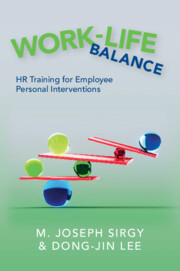Book contents
- Work-Life Balance
- Work-Life Balance
- Copyright page
- Contents
- Figures
- Tables
- Part I Making the Case for Work-Life Balance
- Part II Behavior-Based Personal Interventions of Work-Life Balance
- Part III Cognition-Based Personal Interventions of Work-Life Balance
- 9 Segmenting Roles and Domains
- 10 Integrating Roles and Domains
- 11 Engaging in Value-Based Compensation
- 12 Applying Whole-Life Perspective in Decision-Making
- Part IV Epilogue
- Index
- References
10 - Integrating Roles and Domains
from Part III - Cognition-Based Personal Interventions of Work-Life Balance
Published online by Cambridge University Press: 19 January 2023
- Work-Life Balance
- Work-Life Balance
- Copyright page
- Contents
- Figures
- Tables
- Part I Making the Case for Work-Life Balance
- Part II Behavior-Based Personal Interventions of Work-Life Balance
- Part III Cognition-Based Personal Interventions of Work-Life Balance
- 9 Segmenting Roles and Domains
- 10 Integrating Roles and Domains
- 11 Engaging in Value-Based Compensation
- 12 Applying Whole-Life Perspective in Decision-Making
- Part IV Epilogue
- Index
- References
Summary
This chapter addresses the topic of integration, a cognition-based personal intervention serving to balance work life with other important life domains such as family life, social life, and leisure life through the principle of spillover. Positive spillover refers to the mental process by which the individual allows positive feelings invested in one life domain to spill over to other domains. Positive spillover occurs when life domains are highly interdependent and integrated. We discuss four interventions that employees use to integrate their life domains to achieve work-life balance: (1) temporal, (2) physical, (3) behavior, and (4) communicative We also discuss intervention programs that organizations can institutionalize to achieve higher levels of employee work-life balance based on these personal strategies.
Keywords
- Type
- Chapter
- Information
- Work-Life BalanceHR Training for Employee Personal Interventions, pp. 115 - 128Publisher: Cambridge University PressPrint publication year: 2023

